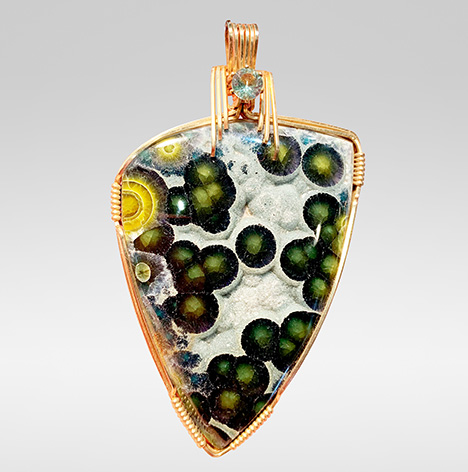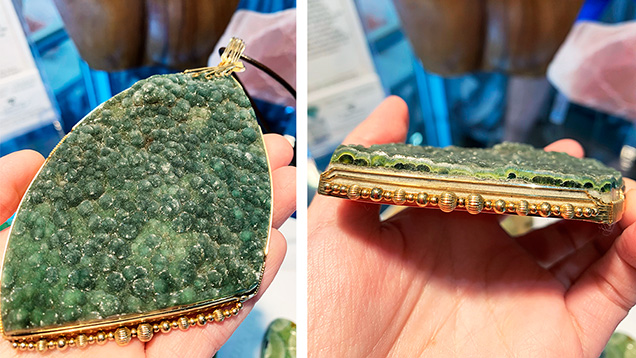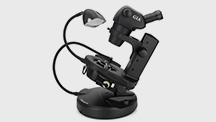Many Faces of Wavellite
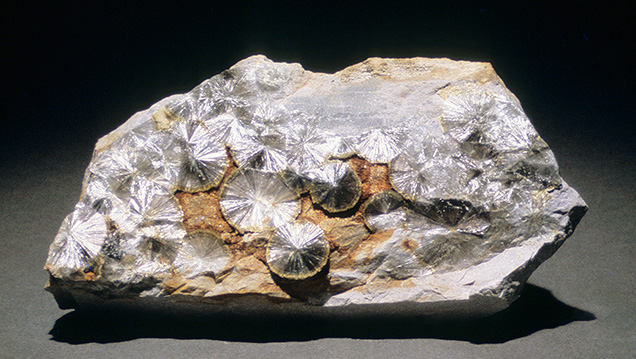
A well-known collector mineral, wavellite (Al3(PO4)2(OH)3•5H2O), is named after its discoverer, British surgeon Dr. William Wavell. Wavellite mineral specimens seen on the market often occur as botryoidal aggregates. The crystal clusters are usually spherical in appearance. When the spheres are broken open, the cross sections show their signature radiating pattern formed by acicular-shaped crystals (figure 1).
Wavellite is not a gem material renowned for its brilliance or breathtaking colors, but its unique appearance does trigger curiosity and creativity. At the AGTA show, James Carpenter of Unconventional Lapidarist (Hot Springs, Arkansas) showed the authors a variety of wavellite cabochons and slabs and shared how he stabilizes the material for jewelry use.
All wavellite carried by Unconventional Lapidarist is sourced from Arkansas, one of the well-known sources for this gem. When used in jewelry, wavellite must be stabilized (figure 2) to make the piece durable. This is due to both the relatively low hardness of the material (3.5–4) and its occurrence in the host rock. Arkansas wavellite formed in veins cementing together brecciated sandstone/chert host rock. Therefore, the majority of wavellite specimens occur as very thin slabs or small spherical bodies.
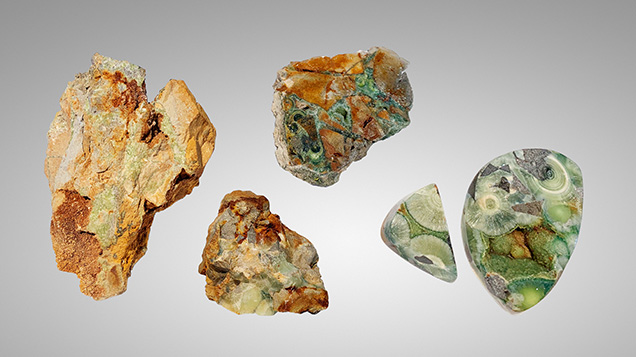
Carpenter noted that 99% of the production needs stabilization for the materials to withstand further processing. He developed his own resin for this stabilization process. This resin is hydrophobic, meaning it is water resistant, and environmentally and biologically friendly. The material is impregnated with this resin in a vacuum under very high pressure and then cured and sliced. Slicing helps reveal where the wavellite is embedded in the host rock. Host rock that bears no wavellite is trimmed off before further polishing. Restabilization is sometimes necessary, especially when cabochons are to be made, to ensure the finished product is durable when set in jewelry. The yield of this process is only about 15%, with 85% waste.
Stabilized wavellite can then be polished to cabochons (figure 3) and mounted in jewelry, with high-quality material revealing an attractive botryoidal structure of rounded segments and/or radiating patterns with beautiful colors. The slab can also be utilized without much polishing (figure 4, left). The latter option works perfectly for stones showing the botryoidal exterior. When one turns this type of cabochon on its side, some of the broken spheres clearly show the radiating pattern, adding appeal to the jewelry piece (figure 4, right). Wavellite can be collected as mineral specimens or used as decor and jewelry material.
